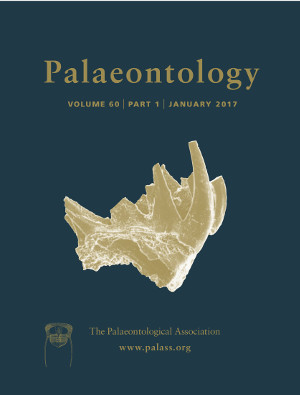Reg. Charity No. 1168330

An isolated, yet virtually intact contour feather (FUM‐1980) from the lower Eocene Fur Formation of Denmark was analysed using multiple imaging and molecular techniques, including field emission gun scanning electron microscopy (FEG‐SEM), X‐ray absorption spectroscopy and time‐of‐flight secondary ion mass spectrometry (ToF‐SIMS). Additionally, synchrotron radiation X‐ray tomographic microscopy (SRXTM) was employed in order to produce a digital reconstruction of the fossil. Under FEG‐SEM, the proximal, plumulaceous part of the feather revealed masses of ovoid microstructures, about 1.7 μm long and 0.5 μm wide. Microbodies in the distal, pennaceous portion were substantially smaller (averaging 0.9 × 0.2 μm), highly elongate, and more densely packed. Generally, the microbodies in both the plumulaceous and pennaceous segments were aligned along the barbs and located within shallow depressions on the exposed surfaces. Biomarkers consistent with animal eumelanins were co‐localized with the microstructures, to suggest that they represent remnant eumelanosomes (i.e. eumelanin‐housing cellular organelles). Additionally, ToF‐SIMS analysis revealed the presence of sulfur‐containing organics – potentially indicative of pheomelanins – associated with eumelanin‐like compounds. However, since there was no correlation between melanosome morphology and sulfur content, we conclude these molecular structures derive from diagenetically incorporated sulfur rather than pheomelanin. Melanosomes corresponding roughly in both size and morphology with those in the proximal part of FUM‐1980 are known from contour feathers of extant parrots (Psittaciformes), an avian clade that has previously been reported from the Fur Formation.